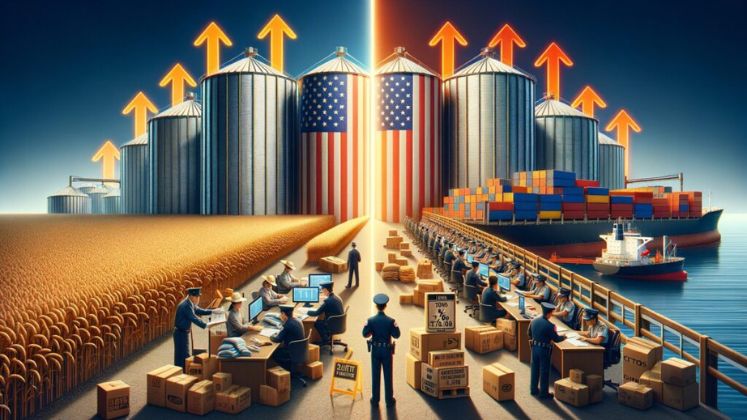
Bangladesh’s ready-made garment (RMG) sector is poised to benefit from recent US trade policies, as the United States imposes significant tariffs on Indian and Chinese goods, opening new avenues for Bangladeshi exporters and investors.
The US last week implemented a 25% reciprocal tariff on Indian imports, with plans to increase this to 50% if India continues its energy imports from Russia. These measures are expected to impact India’s US $ 87 billion exports to the US. Additionally, the US has imposed a 20% tariff on apparel imports from Bangladesh and Vietnam, with China’s tariffs standing at 30%. Negotiations between the US and China over tariffs are ongoing, with President Donald Trump hinting at further increases.
This tariff landscape is prompting US buyers to seek alternative sourcing options. Bangladesh, along with Vietnam, is viewed as a prime beneficiary. Industry exporters and associations believe that the tariffs could lead to increased orders and investments from China and India, as US companies look to reduce costs and diversify their supply chains.
Mahmudul Hasan Babu, President of the Bangladesh Garment Manufacturers and Exporters Association (BGMEA), highlighted that if current tariffs on India and China persist, Bangladesh could see a surge in export orders and foreign investment. However, he warned that the country’s ongoing gas crisis is hampering the full utilisation of its production capacity. He also called for strengthening backward linkage industries and reducing dependence on imported fabric and yarn to support export growth.
Similarly, Mohammad Hatem, President of the Bangladesh Knitwear Manufacturers and Exporters Association (BKMEA), stated that the tariffs are creating a supply gap in the US market that Bangladesh and Vietnam are well-positioned to fill. Hatem stressed the need for resolving the gas crisis, streamlining port operations, and addressing financial sector challenges to fully seize the moment.
Industry leaders also see potential for diversification within Bangladesh’s export portfolio. Former BGMEA president and current President of the Bangladesh Chamber of Industries, Anwar-Ul-Alam Chowdhury Parvez, noted that Indian exports mainly consist of mid-to-high-end garments like designer T-shirts and women’s apparel, which Bangladesh currently does not produce at similar quality levels. He suggested that the higher tariffs on Indian and Chinese products could encourage a shift in investment toward Bangladesh, provided the government offers supportive policies and reduces bureaucratic hurdles.
As Bangladesh’s RMG sector looks to harness these emerging opportunities, industry stakeholders emphasize the importance of political stability, port efficiency, and financial reforms to ensure sustained growth and investment in the sector. The coming months will be crucial in determining how effectively Bangladesh can leverage this shifting global trade landscape.






